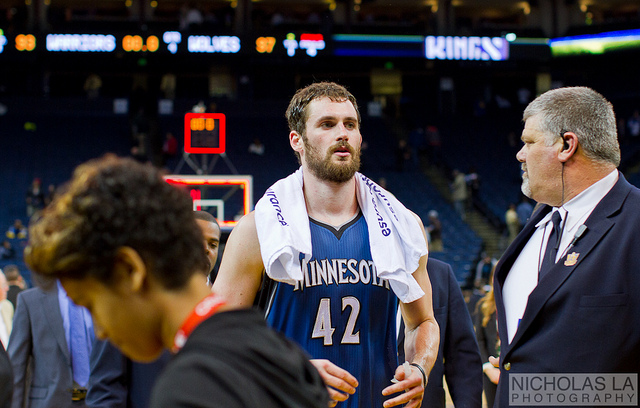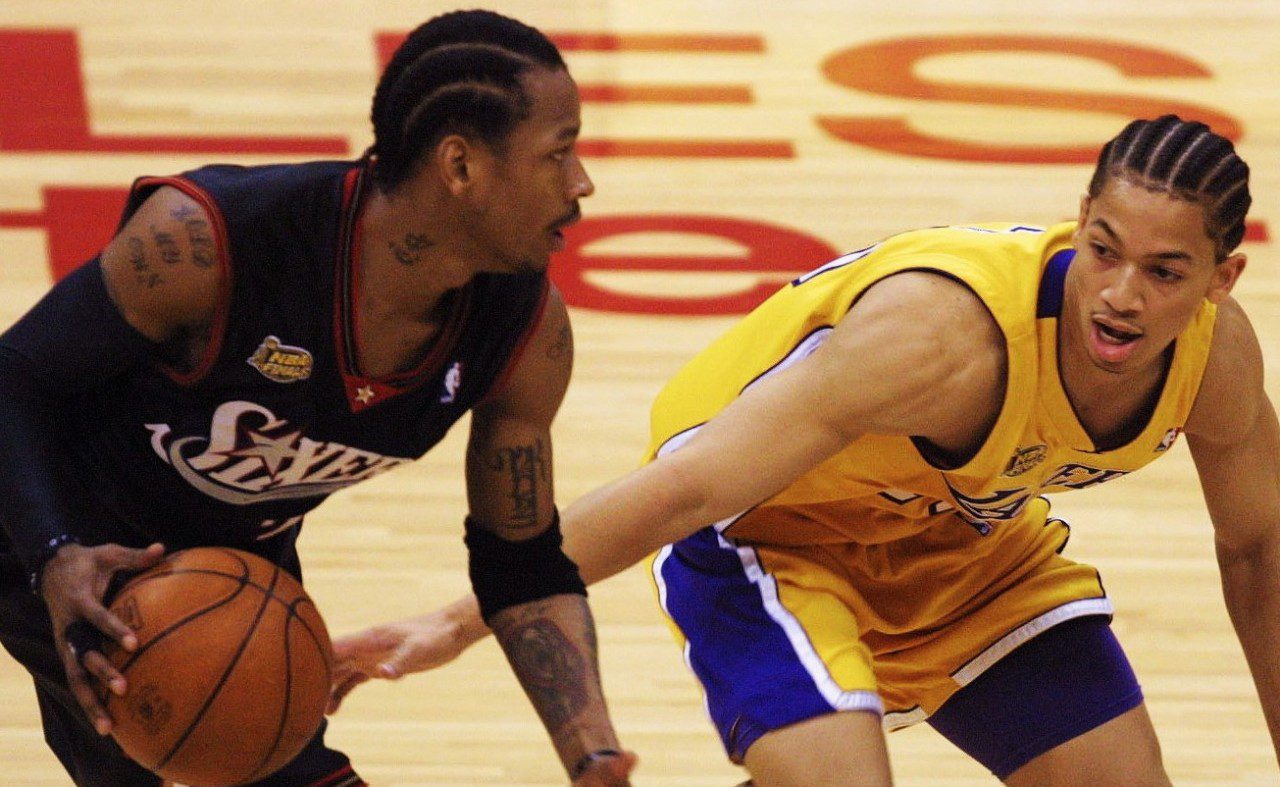
Image courtesy of nikk_la/Flickr.
Kevin Love will be starting for the Western Conference in this year’s NBA All-Star Game, the first time the Minnesota Timberwolves have sent a starting player since Kevin Garnett in 2007. Okay, we’ve covered that. While Minnesotans are proud of their hometown hero—and why wouldn’t they be?—the real story has yet to unfold. No, not the story about how Love has elevated his game without elevating his team’s. The other story …
The general consensus around the league, regardless of who you poll, is that Love isn’t likely to be on Minnesota’s roster for long. Sure, he’s all but assured of staying put for the remainder of this year, and probably even for at least a portion of 2014-15. The prospect of him lasting any longer than that is slim to none, and slim has been overheard talking to a travel agent. Wait, do travel agencies still exist?
In a league built around franchise players, the Timberwolves have long been a franchise without a truly recognizable hero. The Kevin Garnett era was the only brief exception. Not surprisingly, Garnett tops the Timberwolves’ all-time list in games played. Beyond that, we see players like Sam Mitchell, Doug West, Wally Szczerbiak and Anthony Peeler. Care to build a franchise around any of those unremarkable names? The team’s history is essentially the polar opposite of the Boston Celtics. Polar … get it? Especially in a medium market like the Twin Cities, the Timberwolves need a star-caliber player, and they have one, at least for now, in Kevin Love.
Love is under contract through next season, a $15.7 million deal with a $16.7 million player option for 2015-16. All this after signing a four-year, $60.8 million extension in 2012. At the time of the signing, Love openly questioned the Timberwolves’ refusal to include a fifth year in the deal and that oversight will apparently come back to bite the team in the proverbial backside.
This time next year, one of the NBA’s biggest stories will likely be the Kevin Love story. The team, caught between a rock and a hard place, will have to closely evaluate the pros and cons of trading away the face of their franchise, something they were forced to do with the only face of the franchise years before.
As a free agent, Love’s most likely destination is the Los Angeles Lakers, because, you know, the Lakers are hardly ever the number one destination for prospective free agents. “I don’t really want to play for one of the most storied franchises in American professional sports,” said no one, ever. And it’s not like Los Angeles doesn’t already have a track record of taking basketball players from Minnesota, except for that one time they took the entire roster of the then-Minneapolis Lakers and relocated them to California. Still, that was like 56 years ago, and who has time in their daily lives for something as boring as history?
Although, if you really stop and think about it, Love heading west to L.A. does make a certain amount of sense. Love attended UCLA and makes his offseason home in the Los Angeles area with his wife, actress Cody Horn. That’s what industry folks like to call external motivators. There’s also the issue of millions upon millions of dollars—something Love will earn regardless of his eventual destination. There is a lot more awesome stuff to buy in California than there are in a starstruck place like Minnesota.
This is in no way an attempt to portray Kevin Love in a pejorative light. He deserves (in professional sports terms) every penny he’ll get on the open market, and it will be a pretty penny to be certain. Rather, this is about the future and seemingly unavoidable suffering of a long-suffering franchise.
Minnesota received a team during the NBA’s franchise explosion of 1989 when the Miami Heat, Orlando Magic, and Charlotte Hornets also came into being. In their 25 years as a franchise, the Timberwolves have a cumulative record of 785-1189, a .399 winning percentage. That includes the eight consecutive years during the Kevin Garnett era that the team made the playoffs. And it wasn’t all just terrible play, but some pretty atrocious luck to boot.
In 1992, the year in which Shaquille O’Neil and Alonzo Mourning were the two big fish, the Timberwolves picked third, selecting Christian Laettner, more minnow than fish. In 1993, Chris Webber was the belle of the ball. The Timberwolves picked fifth and ended up with Isaiah Rider. 1994 was hardly any better, when Jason Kidd and Grant Hill as well as Glenn Robinson could have recharged the franchise, Minnesota was left to draft Donyell Marshall.
It could be reasonably argued that the only two worthwhile players the Timberwolves have ever added on draft day are the two Kevins—Garnett and Love (the latter was traded from the Memphis Grizzlies for O.J. Mayo). And as the plot unfolds, it appears a foregone conclusion that neither will be lifetime Minnesotans. It’s as if this franchise has no real face, no player to call its own, and no all-time greats. In fact, their one retired number (2) is the jersey of a player, Malik Sealy, who was killed by a drunk driver on his way home from a teammate’s birthday party. Yep. That’s been the history of the Minnesota Timberwolves, straddling the delicate line between comedy and tragedy. Although, when Love departs, via free agency or trade, I don’t think anyone will be left laughing.













